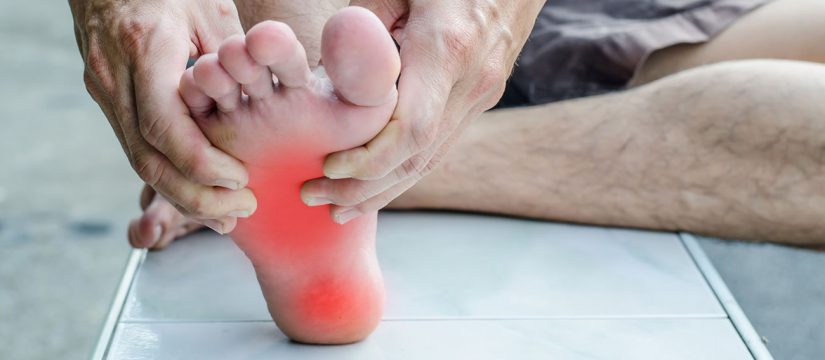
Plantar fasciosis is a diagnosis given for foot pain that arises from the plantar fascia. The plantar fascia is a broad band of dense tissue that extends from the base of the heel bone over the sole of the foot and into to base of the toes. The plantar fascia has an important role in supporting the bones and muscles of the foot during standing, walking and running.
You might have heard of the term- plantar fasciitis which refers to an inflammatory process within the fascia. Current research suggests that this problem is now associated with repetitive overloading of the plantar fascia causing micro tears in the tissue. In simple terms, wear and tear or degeneration of the plantar fascia occurs, rather than ongoing inflammation. Plantar fasciosis is a common source of foot pain. Predisposing factors for that may lead to the onset of plantar fasciosis include;
- A sedentary lifestyle.
- High or low arches of the feet and or tight calf muscles.
- A change in footwear.
- High impact activities, such as running or dancing, or repetitive activities on hard surfaces such as concrete…
- Occupations that require sustained periods of standing.
- Other pre-existing medical conditions such as obesity or an arthritic condition.
Symptoms
The hallmark symptoms of plantar fasciosis include;
Pin point tenderness over the base of the inner heel just before the arch of the foot begins. An ache may also be felt anywhere along the inner sole of the foot.
Pain that is most notable over the heel region upon initial weight bearing after getting out of bed in the morning, especially on a hard floor. The symptoms then will typically resolve, but return in the latter hours of the day.
Treatment
Treatment options for plantar fasciosis should be tailored to individual needs. Essentially though the common treatment goals include: alleviating repetitive stress and strain to the plantar fascia, controlling symptoms, modifying identified aggravating factors and performing regular stretching/strengthening exercises as directed by your osteopath.
Treatment may include:
- Prompt assessment and treatment by your osteopath.
- Arch-support strapping of the foot and or the prescription of orthotics.
- Rest from high impact activities such as running or jumping.
- Weight loss may be necessary.
- Regular stretching and strengthening exercises as directed.
- Ice massage of the sole of the foot.
- The use of simple pain relieving medication as directed by your Pharmacist.
